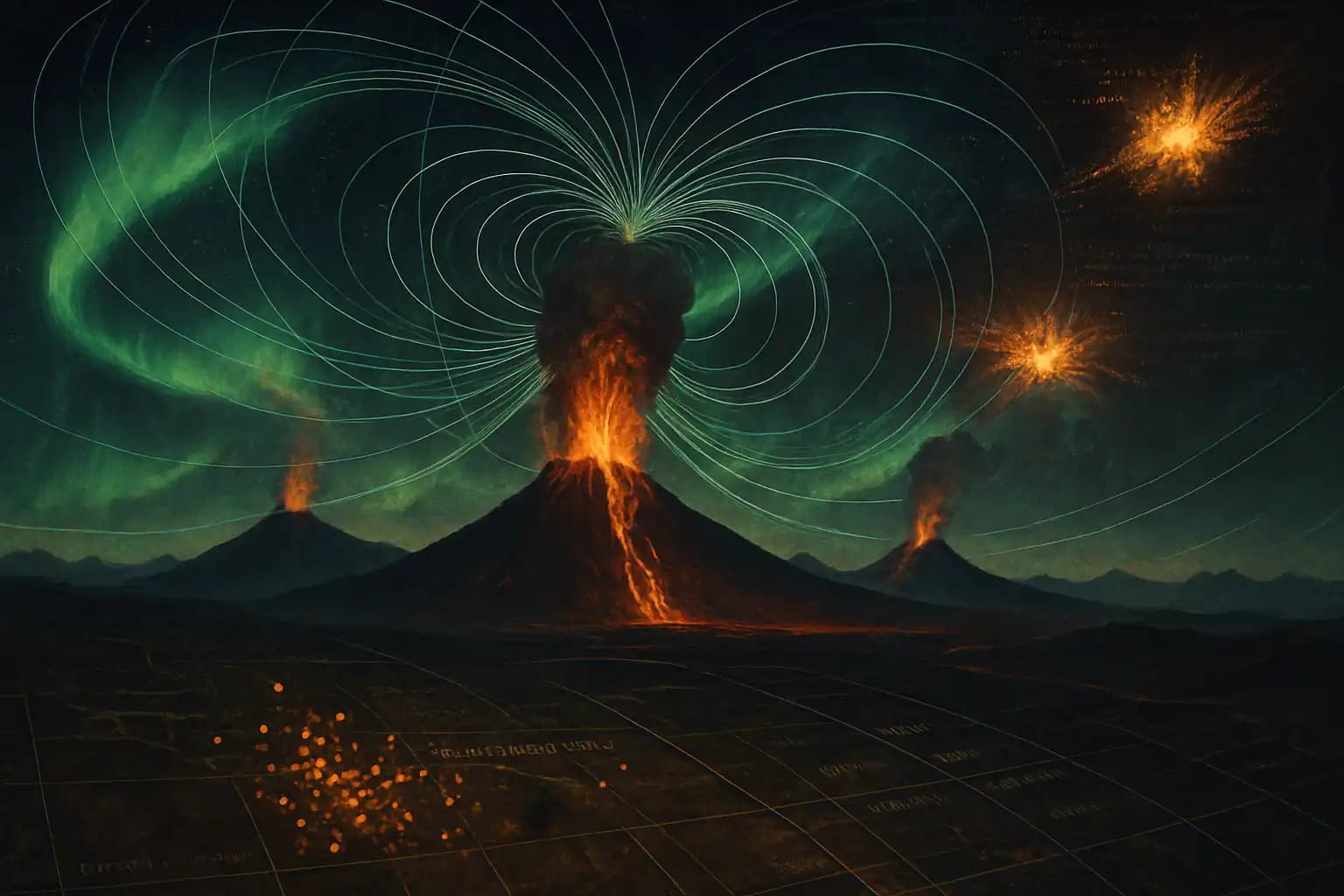A severe G4 geomagnetic storm struck Earth, causing more than just auroras. Major volcanoes, including Guatemala’s Fuego, Hawaii’s Kilauea, and Italy’s Mt. Etna, erupted dramatically within days. Simultaneously, an earthquake swarm near Yellowstone in Idaho kept locals and scientists on edge. Coincidence? Social media thought otherwise, sparking theories faster than magma flows. But is Mother Nature really this reactive to cosmic weather, or are we fabricating patterns?
For centuries, people have observed unsettling coincidences between solar outbursts and geological upheavals. With Solar Cycle 25 approaching its peak, speculation is as rampant as volcanic eruptions. Reports like this Mt. Etna risk analysis and Yellowstone swarm investigations highlight real stakes and real anxieties. Let’s bust the myths and explore the science before you pack your bug-out bag for lava tsunamis.
Geomagnetic Storms: Solar Energy Unleashed
Geomagnetic storms, detailed on Wikipedia, disrupt Earth’s magnetic field through charged particles and plasma from the Sun. These storms rank from G1 (minor) to G5 (extreme) and are more frequent during solar maxima, such as Solar Cycle 25. The last significant G4 storm caused widespread auroras and disrupted power grids, according to NASA and USGS. Yet, the leap from magnetic chaos to volcanic explosions or tectonic slips remains hotly debated in geophysics.
The initial energy surge compresses our magnetosphere, triggering a cascade of electrical dominoes across the planet. Known impacts include electrical grid failures, navigation issues, and magnificent sky displays. While some researchers link cosmic events to seismic activity, the consensus at the USGS finds no proven connection between geomagnetic storms and earthquakes.
Solar Cycle 25: Maximum Uncertainty Meets Volcanic Risk
Solar Cycle 25, which began in late 2019, has generated significant headlines. As noted in NASA’s primer and explored in solar science blogs, experts anticipate sunspot activities, flares, and geomagnetic disturbances to rival those of past solar maximums. Some peer-reviewed studies suggest a minor increase in seismic or volcanic activity post major solar events, as seen in this analysis. However, others, including the USGS FAQ, outright deny any connection. This results in an ongoing scientific standoff.
Yet, patterns persist—sufficient to fuel ongoing updates like astronomical explosion warnings and sightings of car-sized fireballs before major events. Detractors dismiss these as coincidences, while disaster preppers and some scientists view them as warnings we cannot ignore.
Earthquakes, Volcanoes, and the Role of Space Weather
Decades of research have explored the potential solar-seismic connection. One ScienceDirect article suggests that solar wind surges and magnetic field disturbances could “nudge” faults or magma chambers near failure. Recent studies indicate that for earthquake swarms like Idaho’s—and high-pressure volcanoes like Fuego and Etna—space weather may play a subtle role, acting less as a hammer and more like a feather on the scale.
However, context is crucial, as is skepticism. Historical analyses, such as geophysical warnings and global risk alerts, remind us that disasters typically require multiple triggers. The ultimate cause is rarely as straightforward as a solar sneeze.
From Hype to Hard Data: Preparing for the Next Solar Slam
Preparedness is always wise, particularly with dynamic systems like Earth’s crust and an unpredictable Sun. While the links between geomagnetic storms and catastrophic eruptions remain tenuous, monitoring space weather and volcanoes is essential. Data-driven warnings, such as this Etna eruption analysis or fascinating Antarctic diary conspiracies, serve as reminders that genuine alerts and wild theories often coexist.
To distinguish real threats from sensational hype, follow geophysicists, monitor space weather, and stay updated through credible sources. Maintain a healthy skepticism for viral eruptions or swarm updates. And, of course, keep your tinfoil hat accessible, just in case. For thorough and straightforward breakdowns, visit Unexplained.co: your source for the truth behind solar-induced fears.





